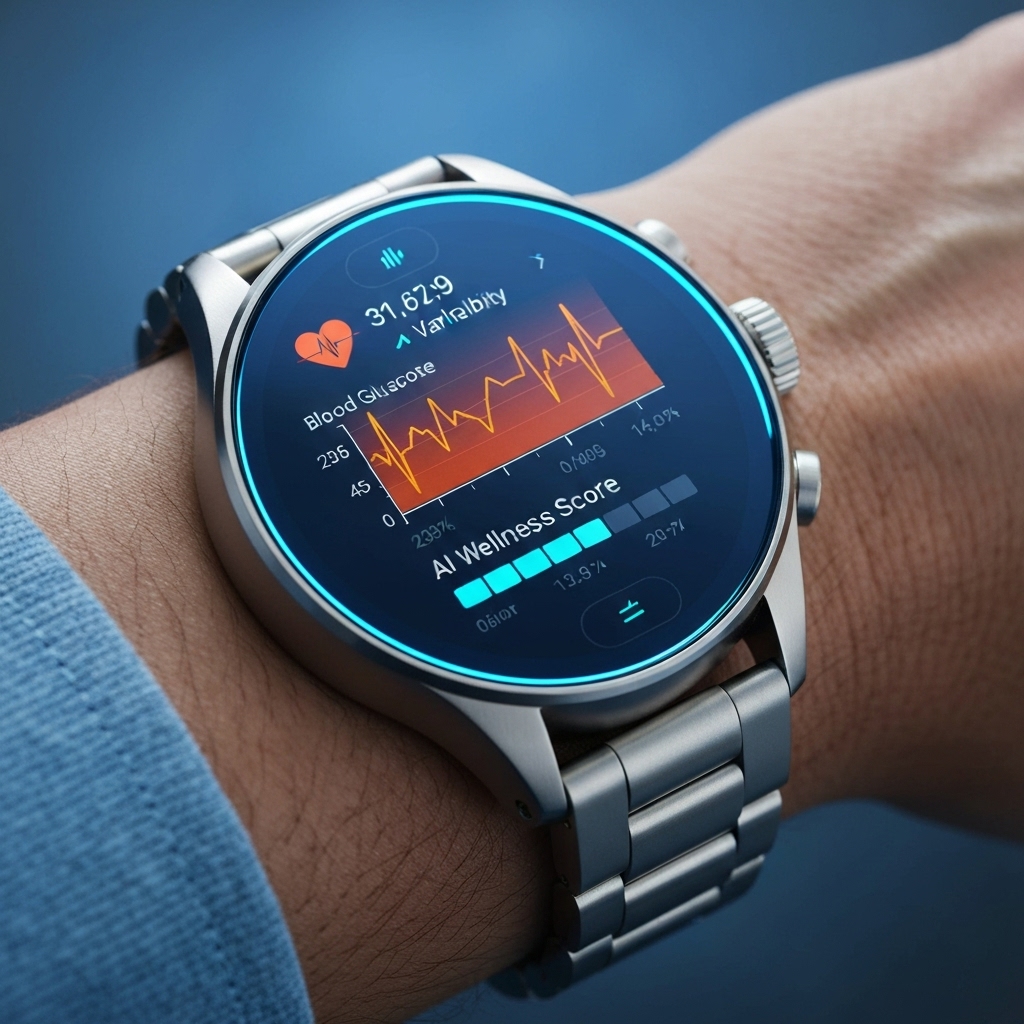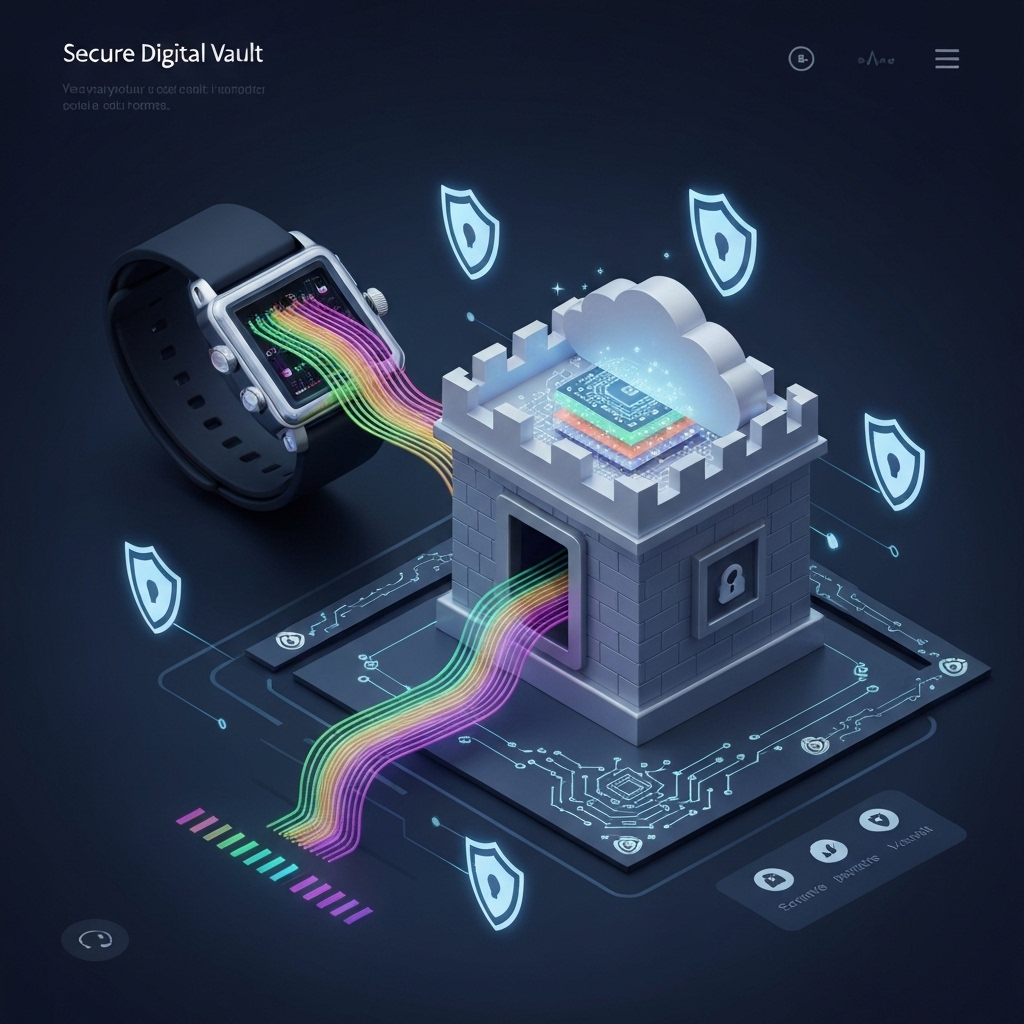Artificial intelligence is transforming wearable technology from simple fitness trackers into powerful health monitoring tools. Modern smartwatches and biosensing patches now leverage AI algorithms to analyze vast streams of physiological data—such as heart rate variability, skin temperature, and blood oxygen levels—in real time. This enables users to detect early signs of potential health issues, like irregular heart rhythms or elevated stress markers, before they become serious. Devices like the Apple Watch and Fitbit have already demonstrated the ability to alert users to possible atrial fibrillation, showcasing how AI enhances early diagnosis. For more on how these devices are validated, visit the U.S. Food and Drug Administration’s digital health resources.
What sets AI-powered wearables apart is their capacity for predictive analytics. By learning individual baselines over time, these devices can identify deviations that may indicate illness or fatigue—even before symptoms appear. For instance, research from Nature Digital Medicine has shown that wearables combined with machine learning can predict the onset of conditions like diabetes and hypertension with increasing accuracy. This shift from reactive to proactive healthcare empowers individuals to take control of their well-being with personalized, data-driven insights.
Beyond personal use, the data collected by AI-enhanced wearables is contributing to broader medical research and population health studies. When aggregated and anonymized, this information helps researchers understand disease patterns and treatment responses across diverse groups. However, this progress also raises important questions about data privacy and regulatory oversight. Organizations like the World Health Organization are actively exploring ethical frameworks to ensure these technologies benefit everyone without compromising user trust.
How AI Enhances Wearable Devices
Wearable devices equipped with AI are transforming how we monitor our health on a daily basis. By continuously collecting biometric data like heart rate, sleep quality, and blood oxygen levels, these smart gadgets can identify subtle changes that might go unnoticed by the user. Advanced algorithms analyze this information in real time, searching for patterns or deviations that could signal early signs of health issues—sometimes even before any physical symptoms appear. This proactive approach enables earlier interventions and supports more personalized healthcare strategies.
What makes these wearables particularly powerful is their ability to learn from individual users over time. Machine learning models adapt to each person’s unique physiology, refining their predictions and becoming more accurate with prolonged use. For instance, a wearable might detect irregular heart rhythms that suggest atrial fibrillation, prompting the user to consult a healthcare provider. Studies have shown that consistent monitoring through devices like smartwatches can contribute to better management of chronic conditions and improved overall wellness (National Institutes of Health).
Beyond individual benefits, the aggregated and anonymized data from millions of users can help researchers identify broader health trends and accelerate medical discoveries. However, the effectiveness of these tools depends heavily on data accuracy, user engagement, and proper integration with clinical care. As the technology evolves, collaboration between tech companies and healthcare providers will be key to ensuring these insights lead to meaningful outcomes.权威来源 like the U.S. Food and Drug Administration are already working to regulate such devices to ensure safety and reliability.

From Fitness Tracking to Medical-Grade Monitoring
Modern AI-powered wearables are stepping into the medical spotlight, with several devices now receiving regulatory approval for clinical use. Thanks to advancements in machine learning and sensor technology, these gadgets can detect conditions like atrial fibrillation with remarkable accuracy. The Apple Watch, for example, has received FDA clearance for its ECG app, enabling users to take an electrocardiogram directly from their wrist. This capability allows for early detection of irregular heart rhythms, potentially preventing strokes and other complications when acted upon promptly. More details about FDA-cleared digital health technologies can be found on the U.S. Food and Drug Administration’s website.
Beyond cardiac monitoring, some wearables are making strides in non-invasive glucose monitoring—a game-changer for people living with diabetes. While fully needle-free continuous glucose monitoring is still evolving, companies are leveraging AI to interpret bio-signals from skin sensors, reducing the need for frequent blood tests. These innovations promise greater comfort and adherence to treatment plans, improving long-term outcomes. Research in this area continues to gain momentum, supported by institutions like the National Institutes of Health, which funds studies on wearable medical devices.
Another groundbreaking application is the prediction of epileptic seizures using neural pattern recognition. Devices such as the Empatica Embrace2 have been cleared by regulatory bodies to alert caregivers when a seizure is detected, offering peace of mind for patients and families. By analyzing subtle changes in physiological signals—like electrodermal activity and movement patterns—AI models can identify anomalies before they escalate. This proactive approach exemplifies how wearables are shifting from reactive tools to preventive healthcare allies.
As these devices become more integrated into medical practice, they’re redefining patient engagement and remote monitoring. Physicians can now access real-time data streams, enabling timely interventions and personalized care plans. With continued validation and collaboration between tech developers and healthcare providers, AI-driven wearables are poised to play a central role in managing chronic diseases and promoting preventive health strategies worldwide.
Personalized Health Coaching at Your Fingertips
Wearable devices are evolving beyond step counting and heart rate monitoring, thanks to advancements in artificial intelligence. By leveraging AI, these gadgets can now interpret complex patterns in your daily behavior, transforming into personalized virtual health coaches. They analyze data such as physical activity levels, sleep quality, and even stress markers from heart rate variability, offering timely, context-aware recommendations tailored to your body’s needs.
When integrated with nutrition apps like MyFitnessPal or Cronometer, wearables gain insight into dietary habits, enabling them to suggest optimal times for hydration or recommend rest periods after intense workouts. For instance, if your device detects elevated cortisol levels combined with poor sleep, it might prompt a short guided breathing session through mindfulness apps like Headspace or Calm. These nudges aren’t generic—they’re based on real-time physiological feedback, making them more relevant and actionable.
This level of personalization helps users build sustainable healthy habits by meeting them where they are. Instead of overwhelming you with long-term goals, AI-powered wearables break wellness into manageable, daily choices. According to research published by the National Institutes of Health, just-in-time interventions via wearable tech can significantly improve adherence to physical activity and stress management routines.
As machine learning models become more sophisticated, the potential for wearables to act as proactive health partners grows. They could one day predict fatigue before it impacts performance or detect early signs of illness through subtle changes in biometrics. For now, they’re already helping millions make smarter, data-informed decisions every day—ushering in a new era of preventive, personalized wellness. Learn more about digital health innovations at FDA’s Digital Health Center of Excellence.

Privacy and Ethical Considerations
As wearable devices become increasingly integrated into our daily lives, they collect vast amounts of sensitive health data—from heart rate and sleep patterns to physical activity and even blood oxygen levels. This surge in personal data collection raises significant concerns about privacy and security. Without robust safeguards, this information could be exposed to unauthorized access or exploited by third parties for advertising, insurance assessments, or other purposes without user consent. Ensuring strong encryption and secure data storage practices is essential to protect users from potential breaches.
One promising approach to enhancing privacy is on-device processing, where data is analyzed directly on the wearable instead of being sent to external servers. This minimizes the risk of interception during transmission and reduces reliance on cloud infrastructure. Companies like Apple have started emphasizing privacy-centric features such as on-device health analytics in their wearables, setting a benchmark for the industry. When data stays on the user’s device, it empowers individuals with greater control over who accesses their information.
Transparency is equally important—users should clearly understand what data is being collected, how it’s used, and who has access to it. Clear, concise data policies and intuitive consent mechanisms can go a long way in building trust. The GDPR framework in Europe offers a strong model for user rights and data accountability, which wearable manufacturers globally can adopt voluntarily. Ethical AI use must also be prioritized, ensuring algorithms don’t perpetuate biases or make decisions without human oversight.
Ultimately, responsible innovation in wearables hinges on balancing technological advancement with user trust. By embedding privacy by design, offering meaningful consent options, and adhering to ethical standards, developers can create solutions that not only improve health outcomes but also respect individual rights. As the sector evolves, collaboration between regulators, technologists, and healthcare providers will be key to shaping a future where wearable tech enhances well-being without compromising privacy.

Conclusion: The Future is Wearable and Intelligent
AI-powered wearables are redefining how we monitor and manage our health, moving beyond simple step counts or heart rate readings. These advanced devices leverage machine learning to analyze complex physiological data in real time, identifying patterns that might signal early signs of health issues—like irregular heart rhythms or fluctuations in blood glucose levels. By processing vast amounts of personal data, they offer personalized insights that help users make informed decisions about their lifestyle and wellness routines.
What sets modern AI wearables apart is their ability to learn from individual behavior and adapt over time. For example, smartwatches can now detect changes in sleep quality and correlate them with daily activity, stress levels, or even diet. This level of contextual awareness enables proactive health recommendations, such as suggesting a breathing exercise when elevated stress markers are detected. The integration of AI also enhances accuracy, reducing false alarms and increasing trust in the device’s feedback.
As these wearables become more tightly woven into clinical care, they’re starting to play a role in remote patient monitoring and chronic disease management. Doctors can access data from devices like the Apple Watch or Fitbit to track patient progress outside traditional office visits, enabling earlier interventions. With continued advancements in sensor technology and algorithmic precision, AI-driven wearables are paving the way for a future where preventive care is not just possible—but personalized and continuous.
